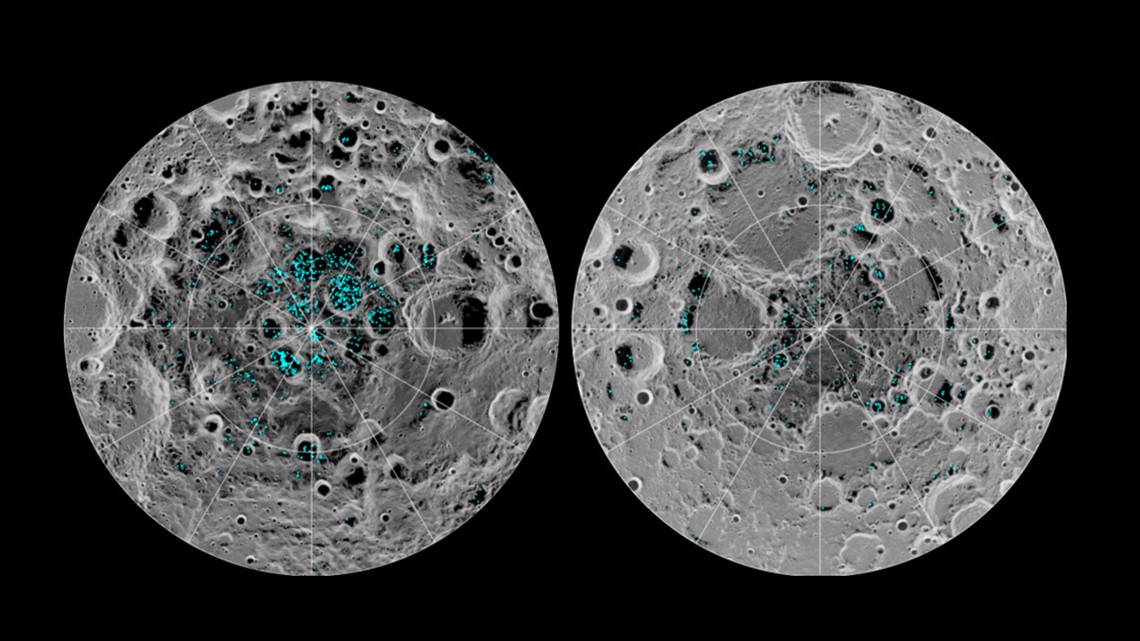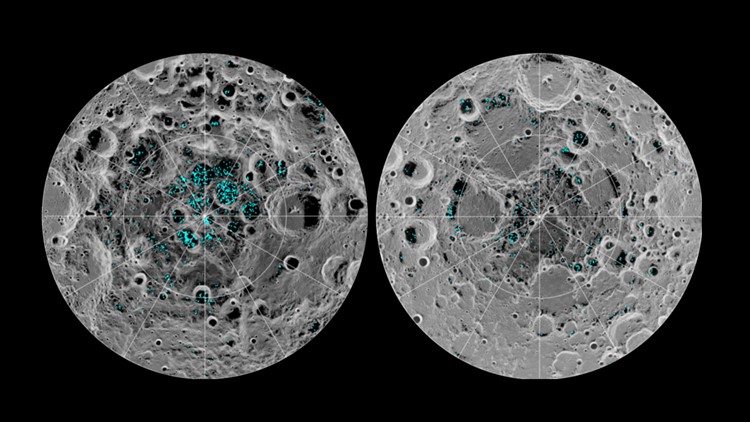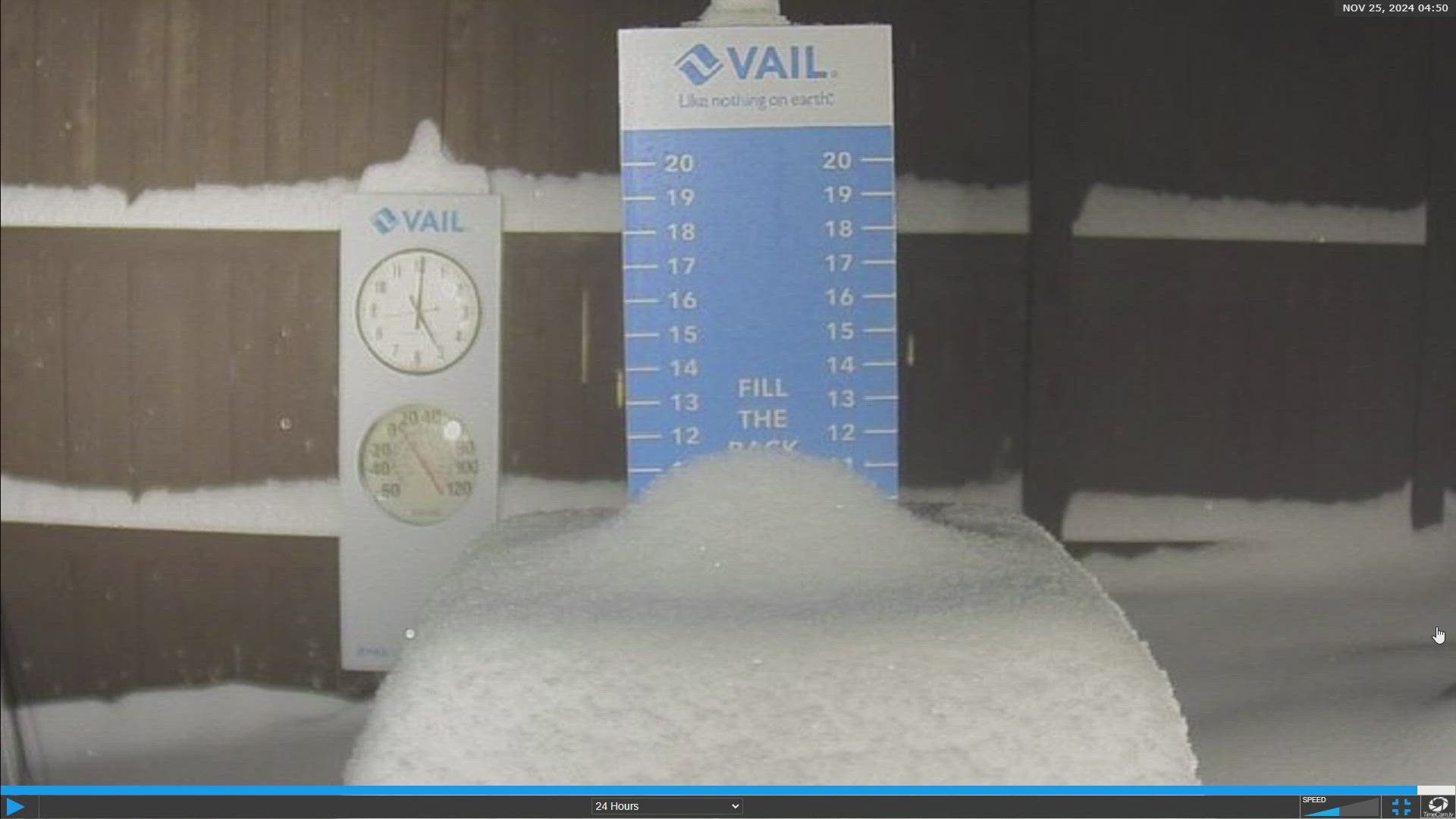Scientists using a NASA tool discovered evidence of ice on three areas of the moon, a finding that could help future moon landings.
Using NASA's Moon Mineralogy Mapper (M3) instrument, the research team identified three areas, mostly within craters at the poles, where water ice lies. M3, which launched in 2008 on the Chandrayaan-1 spacecraft, can directly measure the difference between liquid water, vapor or solid ice.
The ice exists in cold areas of the moon that don't see direct sunlight, where warmest temperatures are about negative 260 degrees. Scientists say the ice could serve as a resource to future moon exploration.


The water ice observation is the first directly observed by scientists, according to a press release. But, scientists have longed suspected ice on the moon since NASA spacecraft Clementine gathered data in the 1990s suggesting frost at the south pole.
The new findings, led by Shuai Li of the University of Hawaii and Brown University, were published in the scientific journal Proceedings of the National Academy of Sciences.
How the ice appeared on the moon is still a mystery. Li told Quartz comets crashing into the moon might be responsible and hopes to test theories if and when a lander is able to directly capture moon ice samples.
Follow Ashley May on Twitter: @AshleyMayTweets


